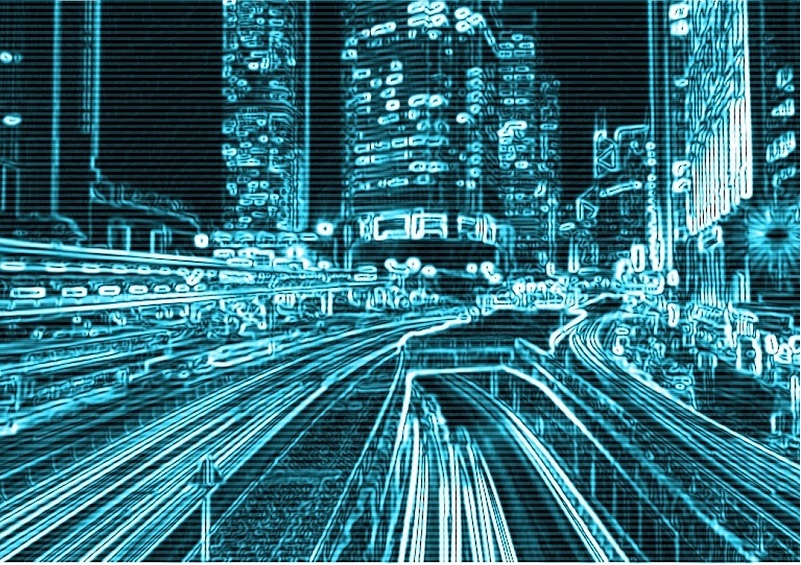How can infrastructure be retrofitted in the digital age?

|
| As technology becomes an ever-present element of the civil engineer’s daily role, how can we digitally retrofit our existing assets to ensure our past engineering stays in line with the future? |
Contents |
[edit] Introduction
'Digital' as a buzzword is becoming ever more prevalent in a world of technology. Whilst it is almost universally understood when applying technology to new-build infrastructure, the retrofitting of existing assets is a harder problem to address.
The ICE Presidential Breakfast roundtable at the end of February 2020 focused on exactly that; how can infrastructure be retrofitted in the digital age? When we consider the fact that circa 99.5% of infrastructure assets are existing and only 0.5% are formed from new build construction, the scale of the problem really starts to show and the need for industry discussion on this topic is evident.
[edit] The role of the digital twin
Many in the industry will understand the concept of a digital twin. It is a digital representation of the asset in question – and is common when considering BIM and new build construction. But what is the point of creating digital twins for existing infrastructure, why do we need them, how can we implement them and ultimately who funds such work?
These were some of the questions we discussed at the roundtable session, along with potential ways to drive forward retrofitting solutions.
[edit] Why a digital twin matters
So firstly – what is the point of implementing a digital twin for an asset which is already working? Well, we must first appreciate that a digital asset is an asset in its own right. It is not a nice to have, but a useful tool with its own merit and therefore should be taken care of (in its data form) with a similar mindset to that of the physical asset.
Whilst infrastructure may be working in its current form, it could perform better and a digital twin would enable us to learn where a system could benefit from improvements. The digital asset enhances our understanding of the physical and allows for us to unlock value in new ways thus helping us to re-prioritise asset management.
The next question then is, why do we need to do this? Well, this answer comes in relation to legislation that commits the UK to achieving net-zero emissions by 2050.
By making our existing assets “digital” we can understand efficiencies in their systems, issues surrounding their on-going ability to perform their function and ultimately make strides towards ensuring the infrastructure sector plays its part in the pathway to net-zero.
The digital element will help track and determine key aspects of the buildings performance and also assist in the maintenance and ongoing operation and ultimately demolition of that asset. We need to understand all these elements to ensure the service an asset is providing can continue to be provided in future, even when it is perhaps past its design life.
[edit] How can we digitally retrofit assets?
So, how are we going to achieve the digital retrofitting of existing assets? Well, there are already a number of organisations and private entities working towards the digitalisation of infrastructure. Early adopters of digital twins are creating models and at great speed. But the question posed in the roundtable was not just how do we achieve it, but also how do we ensure we have a national digital twin not just a nation of digital twins?
Instead of multiple siloed assets, how do we get a system of systems? A digital representation of all the elements which work together to ensure our infrastructure keeps serving its purpose.
Let’s take a building for instance. In future, it may have an increase in demand on the electrical supply. With an independent digital twin, this could be predicted and allowed for in budgets and maintenance. But, how does that information get communicated to the National Grid, so they in turn can work out predicted demand?
By instead creating a national digital twin, all these peaks and troughs of demand can speak to one another, influence decisions and ultimately help us take great strides in improving efficiency, predictions and ultimately net-zero emissions by 2050.
[edit] Where does the money come from?
Finally, and this is the big question, who will fund all this work? Who will ensure that a national digital twin is feasible and achieved? It obviously has a cost associated so where does that money come from?
During discussions on this, many of those in attendance at the roundtable all came back to one point; what is the priority of each element? If we can prioritise the key aspects, then others will follow suit.
Apply available funds in specific areas which will give us, in their words, “the most bang for our buck” and ensure efficiency and positive steps in the right direction.
Whilst ultimately a national digital twin would be the preferred option, how can we take steps to achieving this by first digitising independent assets, but structuring data in the correct way. Ensuring all parties manage their data in a specific format to guarantee that when a single system is ready, all the existing systems speak to one another and perform as anticipated.
Those in attendance appeared to agree that this would be the right way forward but that a single person at the top could not decide what the right way was. It should come from shared learning, best practise and organic growth in development.
Overall, whilst this may be in primary stages within infrastructure, it isn’t new as a concept. When we look at the manufacturing industries, this type of digitalisation has been underway for many years, so perhaps we should look elsewhere to understand what worked and what didn’t, to enable the infrastructure sector to successfully retrofit our assets for the digital age.
This article was originally published on the ICE Infrastructure Blog on 10 March, 2020. It was written by Louise Hetherington MEng GMICE, Structural Engineer / President’s Future Leader.
--The Institution of Civil Engineers
[edit] Related articles on Designing Buildings Wiki
- Building information modelling.
- Defining the digital twin: seven essential steps.
- Digital building dashboard tech on the horizon.
- Digital Roads 2025.
- Digital twin.
- ICE articles.
- Infrastructure that allows humans to flourish.
- National Digital Twin sounds exciting but we must do the hard stuff.
- The Institution of Civil Engineers.
- Understanding the difficulties of digital transformation in construction.
- Virtual reality and big data disrupting digital construction.
- What a digital twin could be.
BIM Directory
[edit] Building Information Modelling (BIM)
[edit] Information Requirements
Employer's Information Requirements (EIR)
Organisational Information Requirements (OIR)
Asset Information Requirements (AIR)
[edit] Information Models
Project Information Model (PIM)
[edit] Collaborative Practices
Industry Foundation Classes (IFC)







